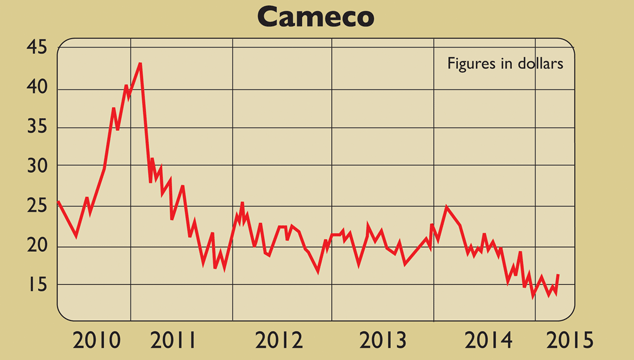How to profit from clean, green energy
Cheap oil has not been the drag on renewable energy that you might think, says Matthew Partridge. Here, he explains why – and picks the best ways to profit from the trend.


Cheap oil has not been the drag on renewable energy that you might think. Matthew Partridge explains why and how to make money from the trend.
When the oil price fell off a cliff in the middle of last year, many people expected that shares in renewable and clean energy companies would follow suit. After all, one of the ideas used to sell renewables to the public is that oil will either run out, or become too expensive.
Faced with cheap oil, surely consumers and politicians would forget all theirtalk of conservation. And at first, this seemed spot on the S&P Global Clean Energy index fell by around 20% in the early autumn.
MoneyWeek
Subscribe to MoneyWeek today and get your first six magazine issues absolutely FREE

Sign up to Money Morning
Don't miss the latest investment and personal finances news, market analysis, plus money-saving tips with our free twice-daily newsletter
Don't miss the latest investment and personal finances news, market analysis, plus money-saving tips with our free twice-daily newsletter
But we took a different view. In a piece on European defensive shares in January this year, I pointed out that rules which require a growing proportion of energy to come from renewable sources would provide support for the sector.
I also noted that the drop in conventional energy costs actually made the extra costs of complying with these rules much more affordable (and so acceptable) for energy consumers. And the market seems to agree since the start of the year, renewable energy stocks have seen a dramatic turnaround. Clean energy has been one of the strongest-performing market sectors, up by 33% year-to-date. The S&P Global Clean Energy index is now higher than it was last summer.
Yet the sector still looks attractive. The fundamentals remain strong. The underlying technologies are evolving rapidly, reducing costs while at the same time boosting environmental benefits. Meanwhile, chronic pollution in emerging economies notably China and India is encouraging the governments in Beijing and New Delhi to spend billions on developing renewable energy, a bonanza for firms with expertise in the area.
While this is good news for all renewable technologies, the key sectors to watch are nuclear power, biofuels and solar energy. We'll take a look at the case for each of these in turn, and we've listed our favourite plays in the box below.
Nuclear power makes a comeback
Ever since it was developed in the 1950s commercial nuclear power has been extremely controversial, due to the perceived risk of a catastrophic failure. Although the industry has indirectly saved countless lives by cutting pollution levels, the Fukushima disaster in Japan in 2011 led to a major anti-nuclear backlash. This was most apparent in Germany and Japan, which overnight moved from being showcases for how nuclear energy could work, to being strongly opposed to the technology.
Japan shut down all of its nuclear reactors, despite relying on nuclear for a third of its energy production.Nuclear energy due to the complex engineering involved also has veryhigh upfront costs, equal to around75% of total lifetime expenses.
While a conventional power plant can be built in a year or two, it takes at least four years to construct a nuclear plant.And in countries with strict planning laws, this can easily double to as much as eight years. At a time when most governments are looking to cut spending, this makes nuclear a hard sell.
However, the reality remains that nuclear power as yet has no long-term rivals when it comes to producing energy cheaply, cleanly and reliably. Both Japan and Germany have found this out the hard way both countries have been forced to turn to oil and coal power to
fill the gap left by their nuclear plants. One study suggests that the Japanese nuclear shutdown has cost energy companies nearly $40bn, more than triple the costs of cleaning up after Fukushima. Consumers have also seen their energy bills soar by more than 30%. Meanwhile, the Japanese government is worried that the move away from nuclear has made it much harder for it to meet its targets for carbon emissions.
Given the economic and environmental logic of nuclear power, it's no surprise that Japan is making tentative steps towards embracing it again. The prime minister, Shinzo Abe, is a big supporter of nuclear power, which formed part of his re-election platform late last year. Since then, he has pushed ahead his government has already approved the reopening of two plants in the Fukui district, with others expected to follow in the near future, provided an ongoing court case is favourably resolved.
Abe's long-term target is for nuclear power to account for 20% of Japan's total power generation within the next 15 years. Of course, while the return of Japan's nuclear industry is important, the biggest growth in demand is coming from China and India. Both countries have forged ahead with building new plants in an effort to move away from their dependence on highly polluting coal-powered plants.
Beijing is building 26 new nuclear reactors, which should enable it to more than double its nuclear-power capacity within the next few years. The Indian prime minister, Narendra Modi, is also a strong supporter of nuclear energy, and has pledged to triple India's capacity within a decade.
Taken together, these efforts are expected to lead to a boom in nuclear plant construction. In a report published in January, the World Nuclear Association (WNA) estimated that Asian countries would build nearly 150 new plants by 2030, at a total cost of nearly $800bn.
If you include construction plans in other parts of the globe, this means that 266 extra reactors will open in the same period, with $1.2trn being invested. These refineries will also require fuel as a result, the WNA expects global uranium consumption to double.
Biofuels sugar cane will dominate
Biofuel is another renewable technology that is coming of age, despite the slide in the oil price. The idea is to cultivate fast-growing plants to turn into fuel, which can then be used as a substitute for petrol. The carbon dioxide removed from the air by the crops when they are produced means the overall process is (theoretically) carbon neutral.
A wide range of crops can be turned into biofuel but the main ones are corn, sugar and palm oil. Given farmers' political clout, it is no surprise that the US government has been supporting corn-based fuel by requiring petrol stations either to sell an ethanol blend, or pay an extra tax.
This support has proved controversial corn-based ethanol is relatively inefficient once the fertilisers and land used to grow the corn is taken into account. Petrol companies also complain that the ethanol mandate is functioning as a hidden tax on petrol.
And with more than a third of US corn now used for biofuels, there have also been complaints that it is driving food prices higher and harming global food security. As for palm oil, environmentalists fear that its increasing popularity encourages deforestation, especially in countries such as Indonesia. This has a big impact on biodiversity.
That leaves sugar cane ethanol as the most environmentally friendly solution. The Brazilian government has been pushing this technology since the 1970s. All cars sold in the country by law have to be able to run on an ethanol blend of at least 20%, although more than 90%of them can run on pure ethanol.
As a result, with car ownership growing rapidly in Brazil, demand for ethanol should surge. Indeed, by 2022 theacreage in Brazil devoted to growing sugar for biofuels is expected to be 80% higher than it was in 2006. India, the world's second-largest producer ofsugar, is also increasing its output of sugar cane ethanol.
Perhaps the biggest herald of sugar cane ethanol's future dominance is the fact that even the US is starting to encourage ethanol producers to switch to sugar cane. In 2010 the United States Environmental Protection Agency certified sugar cane ethanol as an "advanced" fuel.
This has allowed Brazilian imports to count against the ethanol mandate (normally restricted to US-produced crops). Congress has also capped the amount of corn ethanol that can be counted against the mandate.
Of course, while a sugar-based biofuel has little nutritional value and is relatively cheap to produce (compared to corn), it still requires land and other inputs. This means it still has a negative impact on food supplies (in theory at least), although far less so than corn-based ethanol. As a result, scientists are looking at a host of advanced fuels that are even more efficient and environmentally friendly.
For example, in 2013 the Italian town of Crescentino opened a plant that generates 75 million litres of ethanol every year from agricultural waste. Novozymes, which is involved in the Crescentino project, is also working with an Indian company to develop enzymes that can turn seaweed into biofuel.
Solar energy is near a tipping point
In the past, solar energy was seen as a fringe, unreliable technology, onlyviable in desert areas, and even thenonly with large public subsidies.But those days are long gone. Solar is becoming increasingly competitive compared to electricity produced via conventional methods even in colder, cloudier climates, such as northern Europe.
A recent Deutsche Bank report notes that four years ago the cost of generating solar electricity was seven times that of coal-generated wholesale electricity. Now it's less than double and at current rates of development, parity is only a year to 18 months away.
As well as the marginal generation costs, the cost of installing solar systems, especially solar panels, has been falling. Overall costs have fallen by around 15% a year for nearly a decade, and should go down by a further 40% in the next four to five years.
One big innovation has been the creation of "yield cos", financial vehicles that have made it easier for firms to raise large sums of money for capital investment. While these have been largely limited to developed countries, they are now gradually growing in emerging markets, boosting the solar industries in those countries.
The main stumbling block to mass adoption is that it is still expensive to store power generated during the dayfor use at night. However, the development of cost-effective batteriesfor this sort of energy storage is progressing fast.
The cost of lithium batteries, the most reliable technology especially for small-scale use is falling by 20%-30% a year. At that rate we would see a tipping point by the end of this decade. This progress is encouraging countries to invest large sums in solar energy. One of the most audacious solar power schemes comes from Dubai.
The Dubai Electricity and Water Authority is paying ACWA from Saudi Arabia $330m to build a 200 megawatt plant, which is expected to open in two years' time. The cost of the electricity produced by the plant will be less than six cents per kilowatt-hour, the lowest costs for any solar plant in the world, and well below the cost of most conventional power generation.
The six green energy investments to buy now
One way to profit from the nuclear comeback is via uranium producers. Strong growth in demand should see the recent rally in uranium prices continue. In turn this should boost shares in Cameco Corporation (NYSE: CCJ), the world's largest uranium producer.

Recent production figures from its Cigar Lake mine in Canada suggest that production at the mine is beating expectations. That should enable Cameco to grow overall output by up to 50% in the next three years. The company trades on a price/earnings (p/e) ratio of just under 15 times 2016 earnings and offers a dividend yield of around 2%.
Nuclear power plants also involve a lot of complex engineering. Babcock & Wilcox (NYSE: BWC) is one of the top US designers of nuclear power plants and manufacturer of related components. The company has developed a small, modular reactor that makes it easier to generate nuclear energy on a small scale, reducing the barriers to entry for smaller power companies.
In contrast to most reactors, which are assembled in the field, most of the work is done in the factory, meaning there's less chance of cost overruns. This project has secured ongoing funding from the US Department of Energy. The company trades on a p/e of 13.
The boom in sugar-based ethanol should be good news for Brazilian firm Cosan Limited (NYSE: CZZ). Cosan is a conglomerate that produces sugar and turns it into ethanol for export. It also operates a joint venture with oil major Royal Dutch Shell that aims to develop Shell's ethanol and biofuel capabilities.
While Cosan is slowly branching out into other energy sources, acquiring BG's gas distribution operations three years ago, this will remain a minor part of its overall business and its core focus will remain on renewables. At the moment Cosan trades at only nine times next year's earnings and at close to the book value of its assets.
Alternatively, if you feel adventurous, you could take a punt on a recovery in the sugar price. For the past four years the price of sugar has been falling and is at around a third of its 2011 peak. However, in the past few weeks it has rallied, with the price up by around 11%.
While most spread-betting firms allow you to bet directly on sugar, a safer option is to buy an exchange-traded commodity, which tracks the price. ETFS Sugar (LSE: SUGA) charges an annual fee of 0.49%. It's not a "buy-and-hold" investment, but might be a good way to play a short-term rally. And if you feel really bold, you could consider Solazyme (Nasdaq: SZYM).
This biotechnology company is working on producing fuel from algae. It doesn't have any earnings yet, but it has recently done a deal with drilling company Flotek to develop an enzyme to help lubricate drills. Experts believe that this could end up making Solazyme a lot of money, and should help it fund its main research projects.
On the solar side, Enphase Energy (Nasdaq: ENPH) specialises in micro-inverter technology. These pieces of kit convert the current produced by solar panels into a form that can be used by most equipment and electrical goods. They are specifically designed to be used by residential and business users and produce more electricity than conventional converters.
With rooftop solar installation growing at around 50% a year in America, Enphase is expected to grow at a faster rate than most solar-related firms. As a result the p/e ratio is expected to fall from 55 in 2015 to only 17 in 2016.
Get the latest financial news, insights and expert analysis from our award-winning MoneyWeek team, to help you understand what really matters when it comes to your finances.

-
 Will HMRC block money market funds from the stocks and shares ISA allowance?
Will HMRC block money market funds from the stocks and shares ISA allowance?Cautious investors looking for cash-like returns could be prohibited from using money market funds in a stocks and shares ISA under new ISA rules from HMRC. What could it mean for you?
-
 Nationwide: House price growth slows but market remained resilient despite Budget worries
Nationwide: House price growth slows but market remained resilient despite Budget worriesThe average price of a house in the UK was £272,998 in November, as annual house price growth slowed to just 1.8%, Nationwide said.